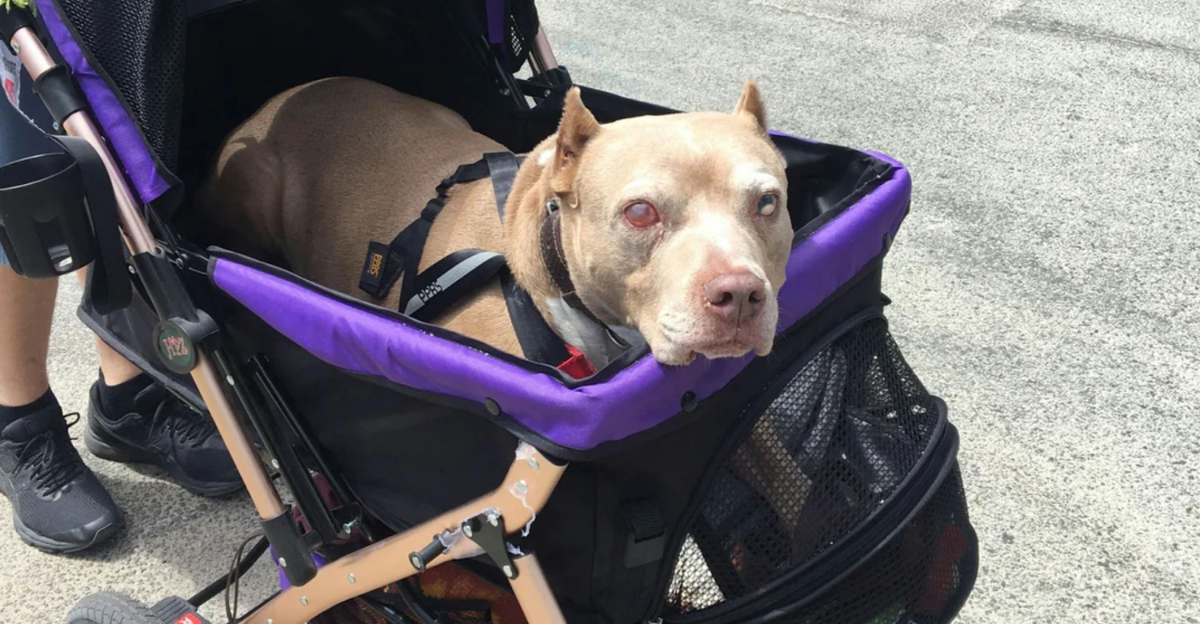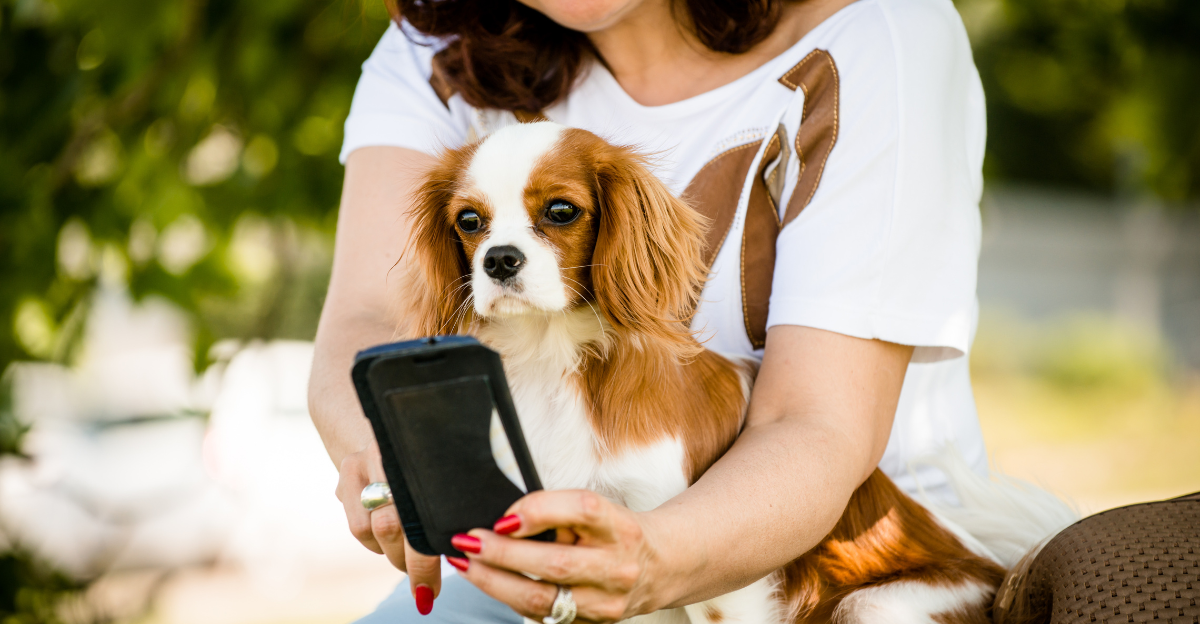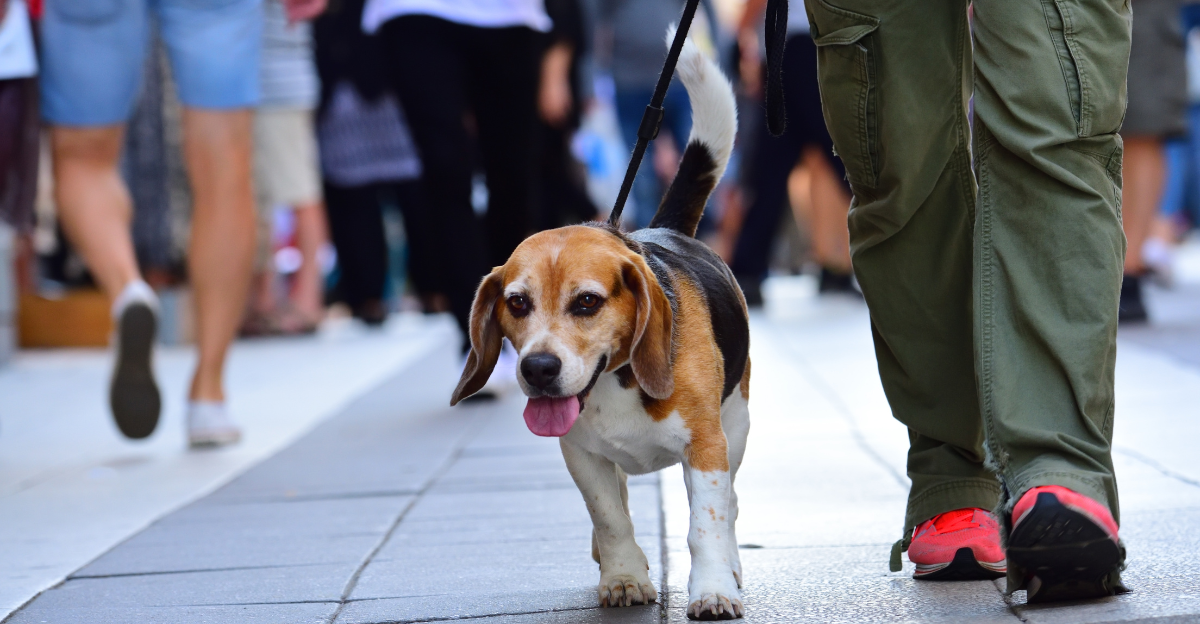
Dogs have stood by humans for millennia, but the rapid pace of modern life is now taking a serious toll on their mental health. Unlike the past, today’s dogs aren’t suffering from hunger or illness—they’re grappling with stress, anxiety, and emotional confusion.
According to University of Copenhagen researchers, many dogs today are overwhelmed by our digital lives and emotional expectations. These psychological issues often go unnoticed until they erupt in behavioral changes.
As our world moves faster and grows more tech-driven, dogs are struggling to keep up. Now, let’s look at 8 morden habits that trigger psychological disorders in dogs
1. Screen Time is Hurting Your Dog’s Mental Health

Constant phone use isn’t just hurting human relationships—it’s affecting our dogs, too. A survey by Bought By Many found that 89% of owners saw their dogs trying to grab their attention while they were on digital devices.
Barking, whining, sitting on phones, and even scratching at screens are common reactions. These behaviors point to rising anxiety caused by emotional disconnection. Veterinary surgeon Neerja Muncaster warns that the issue goes deeper: missed walks and reduced playtime can lead to obesity and more serious stress disorders.
Digital distractions may seem harmless, but to your dog, they signal abandonment and neglect.
2. Remote Work Has Created Clingier, More Anxious Dogs

Remote work has transformed our routines, but it’s also created an unexpected canine crisis. Today, over a third of workers in Great Britain work from home—up from just 4.7% pre-pandemic. Dog behaviorist Nick Jones has seen a sharp rise in separation anxiety since this shift. Without boundaries, dogs grow overly dependent on constant company.
A Royal Veterinary College study found one in three pandemic-era dogs show signs of anxiety when left alone. These include destructive chewing, howling, and house-soiling. Dogs never learned how to be alone, and now they’re paying the price when owners step away—even briefly.
3. Life Triggers More Fear in Dogs

Dogs raised in cities are more fearful than those in rural areas, according to researchers at the University of Helsinki. This mirrors human patterns: city dwellers often face more psychological stress. Urban dogs deal with relentless noise, crowded sidewalks, and fewer natural spaces—factors that constantly trigger their stress responses.
These dogs also tend to be less active, as their owners often avoid training or outings that might expose them to fearful situations. This lack of stimulation deepens anxiety, creating a feedback loop of inactivity and distress. As cities expand, this underrecognized canine mental health crisis continues to grow.
4. Blue Light is Disrupting Dogs’ Sleep and Mood

LED lighting may be energy-efficient, but it’s interfering with your dog’s biological clock. Dogs, like humans, rely on light cues to regulate melatonin and sleep cycles. Exposure to blue light—especially from LED bulbs—can suppress melatonin and cause restlessness.
A recent study showed that bedtime exposure to such lighting led to poor sleep in dogs, raising stress levels and anxiety. Over time, chronic sleep disruption can undermine behavior and health. Experts suggest using warm-toned or amber LEDs in dog sleeping areas.
Establishing consistent lighting patterns can help restore a healthy rhythm—and improve your dog’s mood and overall wellbeing.
5. Viral Fame on TikTok is Damaging Dogs

Social media, particularly TikTok, has made dogs the stars of countless trends—but often at a steep psychological cost. With 80% of users aged 16–34, the pressure to entertain leads many to feature dogs in uncomfortable, staged, or stressful scenarios. Experts warn these videos often misrepresent distress signals—like lip-licking or wide eyes—as comedic.
This not only harms dogs in the videos but teaches viewers to misread signs in their own pets. Behaviorists have linked such misunderstandings to increased bite incidents. In the quest for digital fame, many are sacrificing their dogs’ trust and mental wellbeing for fleeting online applause.
6. Processed Dog Food Can Alter Mood and Behavior

Kibble may be convenient, but its impact on canine mental health is increasingly concerning. High-protein, ultra-processed diets can disrupt the brain’s serotonin balance by limiting the availability of tryptophan—an essential amino acid for mood regulation. Without enough serotonin, dogs may show signs of aggression, anxiety, or hyperactivity.
Dr. Nick Thompson compares this to human junk food’s link to obesity and poor mental health. Nighttime behavioral issues, in particular, worsen when low serotonin affects melatonin production. The connection between what dogs eat and how they behave is direct—and the solution may lie in more natural, balanced nutrition.
7. Humanizing Dogs Can Cause Emotional Confusion

Treating dogs like people may seem loving, but it can backfire psychologically. When owners overly humanize their pets—attributing emotions, motivations, or expectations—they unintentionally create stress. Research shows these dogs often experience confusion and anxiety, especially when expectations don’t align with their nature.
One study revealed that dogs belonging to highly anthropomorphizing owners showed greater signs of emotional distress. Even with strong human social networks, those who overly humanized their dogs reported more behavioral problems. By expecting dogs to behave like mini-humans, we rob them of the stability and clarity they need to thrive as their own species.
8. COVID Isolation Left Lasting Emotional Scars on Dogs

Pandemic lockdowns may have felt like quality bonding time, but they also disrupted dogs’ social development. A study from the University of California-Davis found that 54% of owners now report their dogs withdrawing or hiding from people—far more than before COVID-19.
Dogs who missed crucial early exposure to other animals, people, and environments often grow fearful or reactive. Many exhibit fear-aggression when routines return to normal. Owners initially viewed lockdowns as ideal for pets—but the lasting effect has been a generation of dogs struggling to navigate basic social interactions. For many, the damage has yet to heal.
Helping Dogs Thrive in a High-Tech World

Modern dogs aren’t broken—they’re overwhelmed by environments they weren’t built for. Each of these eight habits reflects a misalignment between a dog’s natural needs and our digital, high-speed lives. As veterinarian Nick Jones wisely states, “Everything is connected. All aspects need to be addressed in a calm and balanced manner.”
Fixing these problems means rethinking how we engage with our pets—from reducing screen time to prioritizing proper socialization, balanced diets, and true companionship. By respecting their instincts and removing artificial stressors, we can help dogs rediscover emotional stability in a world that often forgets what they truly need.
Explore more of our trending stories and hit Follow to keep them coming to your feed!

Don’t miss out on more stories like this! Hit the Follow button at the top of this article to stay updated with the latest news. Share your thoughts in the comments—we’d love to hear from you!







